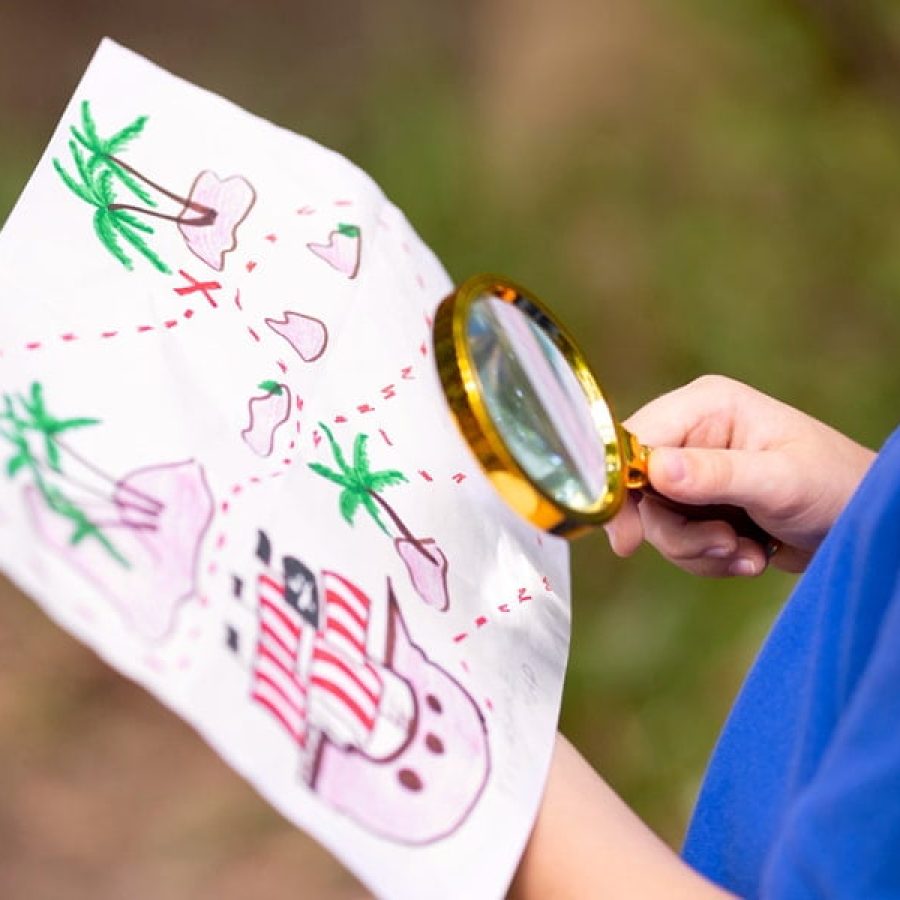As parents, we’re always interested in guaranteeing that the children we raise today will become well-rounded and successful individuals in the future. If you’re interested in investing in your child’s future, why not start with fun educational activities for families?
The Value of Educational Activities for families
To the point: by promoting educational activities, you can help your child achieve success and develop a love for learning in a balanced way. Encouraging children to learn through play has positive impacts on their lives.
Encouraging children to be active, imaginative, social, and curious from a young age will likely benefit them for the rest of their lives. They’ll have way better chances to pursue their dreams if they are not afraid to learn and try new things.
Who knew playtime could be this impactful?
Fun and Age-Appropriate Activities to Engage With the Family
So, as long as parents participate in playtime, all is fair? Is any type of game or activity enough?
Although spending quality time as a family is vital, engaging play that matches your child’s developmental needs can be even more beneficial.
As your child grows, their play preferences will evolve to match their developmental stage. For example, they may crave sensory exploration, benefiting from activities that involve textures, sounds, or visual stimuli.
At other stages, their imagination flourishes, prompting them to direct play and role-play based on their growing experiences and creative ideas.
Let’s explore how parents can match engaging activities with a child’s developmental needs.
Types of Activities For Infants (3-12 months old)
Soft toys, textured fabrics, and rattles can stimulate their sense of touch, sight, and hearing.
Types of Activities For Toddlers (1-3 years old)
Activities that involve building, stacking, or sorting different-sized objects, as well as sensory play with sand, water, or dough, enhance their cognitive and motor skills.
Types of Activities for Pre-Schoolers (3-4 years old)
As children grow, you can explore different sets of activities to keep them entertained and stimulated.
Activities that encourage storytelling, drawing, or building complex structures fuel creativity and spatial awareness.
Social play, simple board games, puzzles, outdoor activities… these are all fun possibilities for pre-schoolers!
Moms and Dads are Part of the Educational Playtime
Spending time together with your child and engaging in educational activities can strengthen your bond and foster a positive relationship.
Not only is it beneficial to your emotional relationship, but joining in during educational activities can impact your child’s learning and development.
Think about it: during playtime, you can help your child acquire new skills, emotional literacy, and attitudes that will prepare them both for school and life.
Through playtime with the family, children learn about cooperation, empathy, and respect and can put all these skills to practice.
And, on top of all of that, making sure you’re near the child also protects them since you’ll make sure that all materials used are safe and won’t harm your Little One.
Family Time: Educational Activities for Children
Color mixing experiments
Color mixing experiments are great for toddlers and preschoolers. This is an experiment families can enjoy together and make without making too much of a mess while still using simple objects you most likely already have at home.
You’ll need:
- food coloring;
- see-through cups or trays;
- about 8 to 10 sheets of paper towels (the number might change according to the amount of colors you’ll use).
Fold the paper towels in halves, and then in quarters. As a result, you’ll have the paper towel folded 4 times. Place it on the sides of the cup so there’s one-half of the folded paper inside the cup, and the other half is out. Place the paper towels in all the recipients, making sure the outside half is touching the half of the other cup.
Add food coloring in different cups, always skipping the next one. So if you have 5 cups, only 3 will have food coloring inside. Into the cups with food coloring, add just enough water to cover the half of the paper towel that’s inside the cup.
As the water gets colored, you’ll see the colors also affecting the paper towels that had no water or food coloring in!
Scavenger Hunt
This is a classic game! It’s suitable to play both outside or indoors, if you happen to find yourself in a rainy situation.
Add a little twist to the classic scavenger hunt while also helping children learn new things!
- If the Little Hunters are toddlers (ages 2-4), use objects to guide them and show what they are looking for. Make it an extra challenge by adding a theme to the hunt. If you choose to do so, make sure to select a theme that the children can identify themselves (i.e. you can look for objects according to specific colors or shapes).
- If they’re in their preschool ages (4-6), refrain from describing exactly what you’re looking for: instead, give hints and clues. This is a great way to get the child to think creatively and focus on a specific task!
- You can also choose to create a theme for the hunt – according to their current favorite movie or TV show.
How Many
This is a great activity when your child is learning numbers – on average, by the time they’re 3 or 4 years old. By now, they most certainly can also differentiate colors and objects as well. So the idea is to combine these different skills.
- Get worksheets with different objects. You could create one yourself, but there are plenty of options online that you can select and print!
- To make it more dynamic, ask the child to select the same color of the objects they’re counting to write down their answer. That means that, if they’re counting apples, ask them which color of pen/crayon/marker they should use to write their answer.
- Once they select their color, they can count the apples and add the corresponding number on the worksheet.
Sun Printing
This is something that preschoolers will have a blast on. You’ll need special sun paper print to do this, and keep up with the weather forecast, as you need a sunny day to get the best of this experiment!
If your child is older than 3 years old, they’ll probably enjoy this experiment.
- Take out your sun print paper and lay it flat on the ground, with the smooth side up.
- Select objects that are found outdoors, like leaves, flowers, or anything else that has an interesting shape.
- Place the objects on the paper, making sure they touch the surface. You can place a flattening board on top of the objects to gently press them into the sun print paper. This will make their “print” even more detailed.
- Wait for a few minutes while the sun does its magic. The paper will change color from white to blue, except where the objects block the light.
- Carefully remove the objects and rinse the paper in water for a minute. You will see your design appear in white on a blue background.
Want to add a bit more magic to it? Squeeze a few lemon drops onto the water where you’ll dive the paper to reveal the print.
Book Bingo
If you’ve been reading AEA’s blog for a while, you already know we’re enthusiasts of reading for children. You can start this habit from a very young age, and children will likely make it a habit throughout their lives.
Take the reading habit as the first step for the book bingo!
- Determine a specific period of time in which the bingo will happen (maybe a week). This gives time both to you and the child to know what they’ll score and add to the bingo chart!
- Set up prizes for when the book bingo is completed (i.e. cooking their favorite dessert on the weekend, or going to a special place together as a family).
- Get other people in the family involved in the book bingo. Why not take the time to create your own bingo chart together as a family?
DIY Sensory Bins
Let kids explore textures with bins filled with rice, sand, or pasta and hidden objects for them to find. This exploration activity helps develop fine motor skills and enhances sensory exploration.
For this experiment, assemble the following:
- A plastic bin or tray with a lid;
- Fillers (e.g., rice, pasta, sand);
- Small toys, spoons, cups: when choosing toys, if you have the option, choose those that are part of a specific series (like Paw Patrol).
To set it up, simply fill the bin with a chosen material and hide small objects inside.
Let kids explore by scooping, pouring, and finding objects. Their end goal is to find all hidden objects, count how many they found, and categorize them as part of the same group.
Build a Fort
Encourage imaginative play and spatial awareness. Building a fort also helps foster creativity and problem-solving while stimulating imaginative play.
You don’t need much to build an indoor fort for your family: take blankets, cushions, and chairs to set the structure up. You can also add string lights or a flashlight for a special touch.
To set it up, help the child drape blankets over chairs or furniture. The whole family can decorate the inside with cushions or lights, and enjoy the time together reading, eating delicious snacks, or watching something.
For more inspiration, check out our article about different types of forts you can build!
Nature Collages
There’s nothing quite like learning from nature. During this activity, your child can creatively learn about plants, leaves, and trees, and still improve fine motor skills.
Firstly, collect leaves, sticks, or flowers from outdoors. Using glue and paper, arrange the collected items and create an exclusive DIY collage!
This can also serve as an excellent party favor or gift made by the Little Artist to one of their loved ones.
Shape or Letter Hunt
This is a creative way to turn your household items into play objects. Choose this activity when you’re stuck inside because of rain, or when you need some time to work but still have to keep the Little Ones entertained.
Create a hunt where children find objects resembling certain shapes or starting with specific letters.
If they are learning numbers and math, you can make the challenge extra special by telling them a minimum number of items they have to look for (i.e. find 4 items that start with the letter F; collect 3 toys that have yellow on them).
Now you know the importance of investing in time together, and how enrolling in educational activities for families is key to developing your Little One as they grow.
Sticking around when your child is making discoveries and celebrating each of them will certainly strengthen your bonds, and reinforce that learning is fun, especially with the family!
Keep your learning streak going and read about at what age a child’s brain is fully developed.


